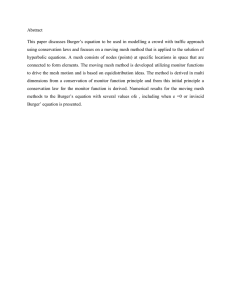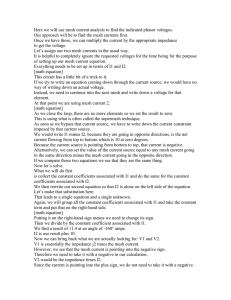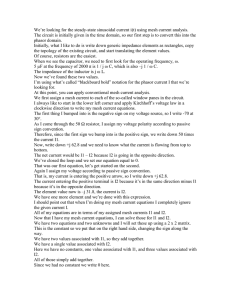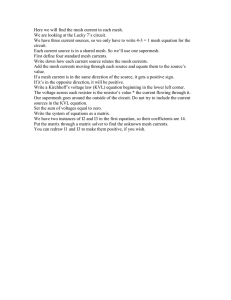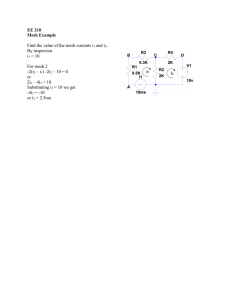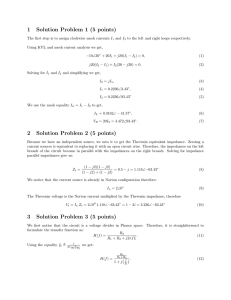We’re looking for the indicated phasor current I using the... We have three meshes in this circuit and I’ll begin...
advertisement
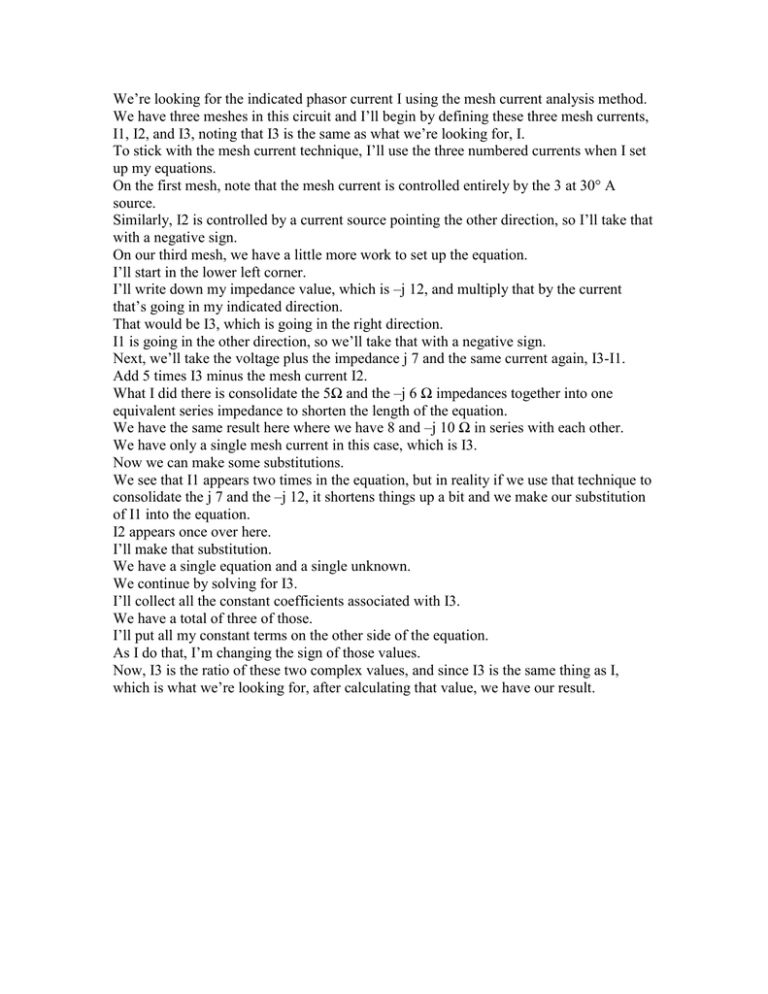
We’re looking for the indicated phasor current I using the mesh current analysis method. We have three meshes in this circuit and I’ll begin by defining these three mesh currents, I1, I2, and I3, noting that I3 is the same as what we’re looking for, I. To stick with the mesh current technique, I’ll use the three numbered currents when I set up my equations. On the first mesh, note that the mesh current is controlled entirely by the 3 at 30° A source. Similarly, I2 is controlled by a current source pointing the other direction, so I’ll take that with a negative sign. On our third mesh, we have a little more work to set up the equation. I’ll start in the lower left corner. I’ll write down my impedance value, which is –j 12, and multiply that by the current that’s going in my indicated direction. That would be I3, which is going in the right direction. I1 is going in the other direction, so we’ll take that with a negative sign. Next, we’ll take the voltage plus the impedance j 7 and the same current again, I3-I1. Add 5 times I3 minus the mesh current I2. What I did there is consolidate the 5Ω and the –j 6 Ω impedances together into one equivalent series impedance to shorten the length of the equation. We have the same result here where we have 8 and –j 10 Ω in series with each other. We have only a single mesh current in this case, which is I3. Now we can make some substitutions. We see that I1 appears two times in the equation, but in reality if we use that technique to consolidate the j 7 and the –j 12, it shortens things up a bit and we make our substitution of I1 into the equation. I2 appears once over here. I’ll make that substitution. We have a single equation and a single unknown. We continue by solving for I3. I’ll collect all the constant coefficients associated with I3. We have a total of three of those. I’ll put all my constant terms on the other side of the equation. As I do that, I’m changing the sign of those values. Now, I3 is the ratio of these two complex values, and since I3 is the same thing as I, which is what we’re looking for, after calculating that value, we have our result.


